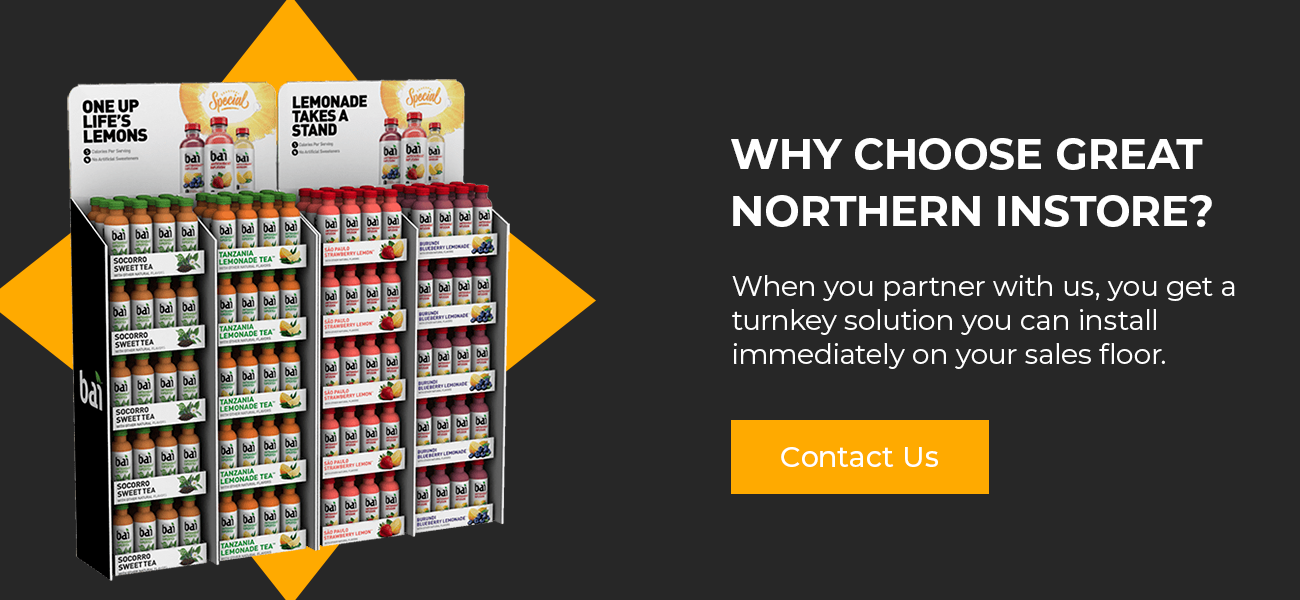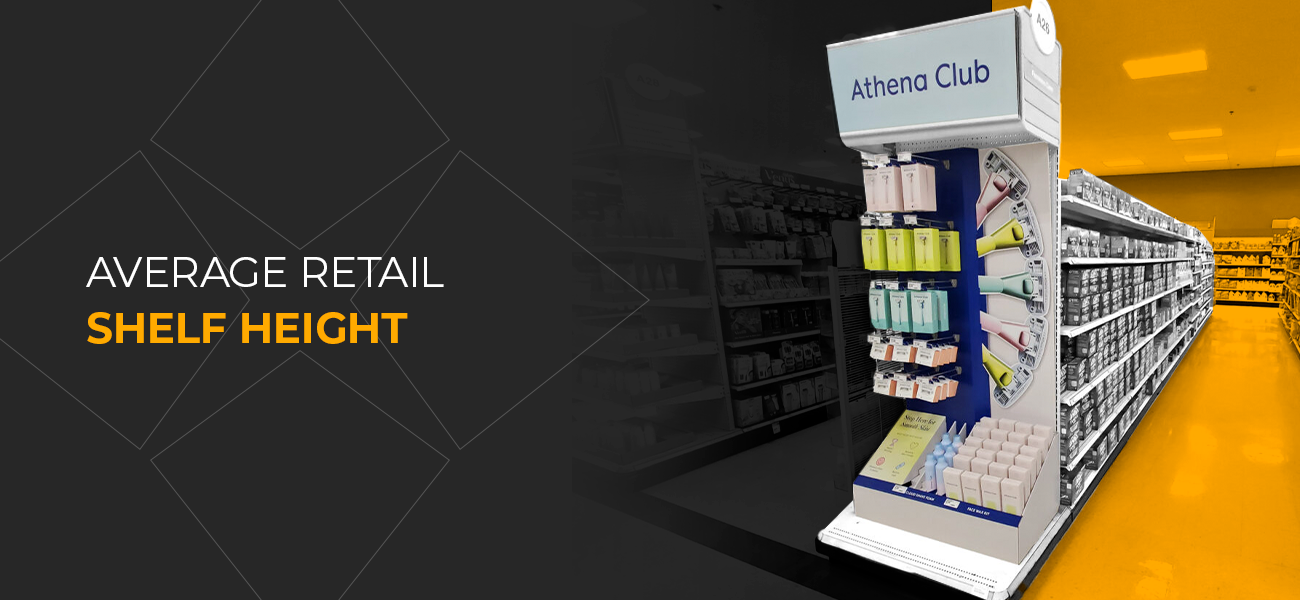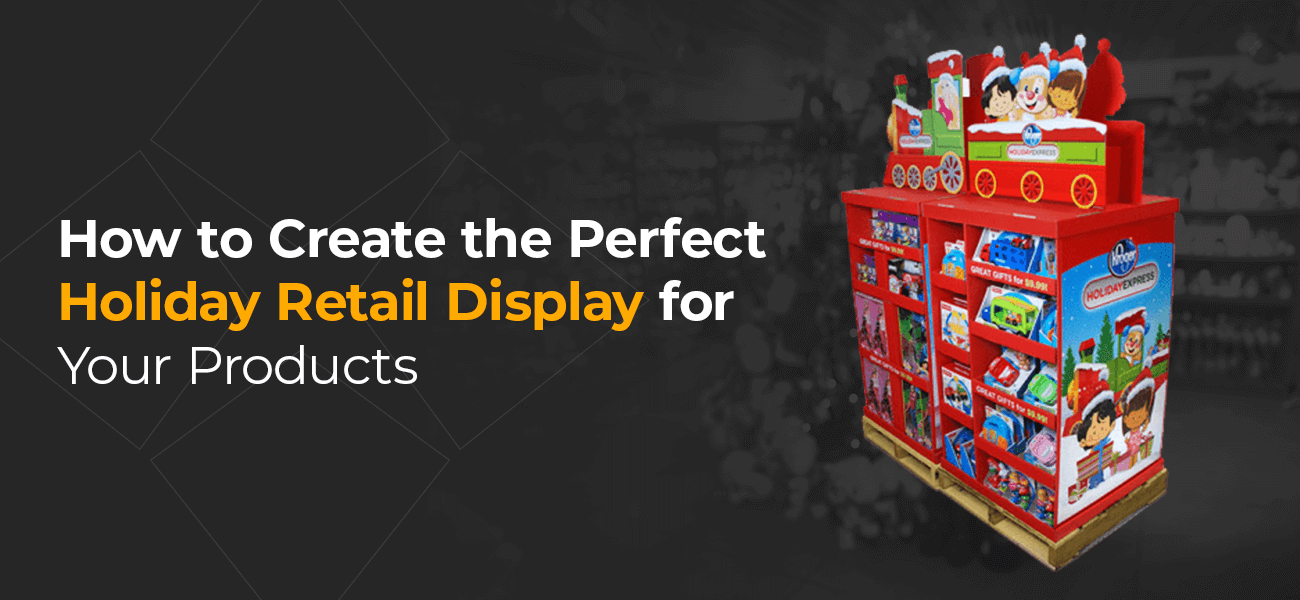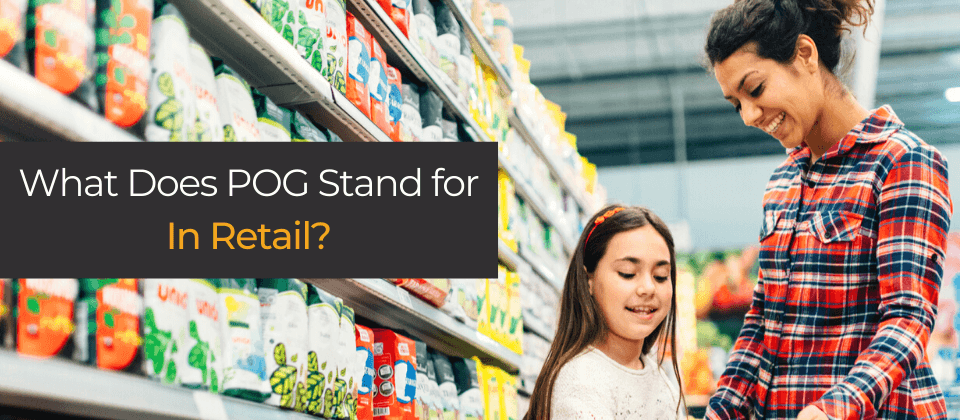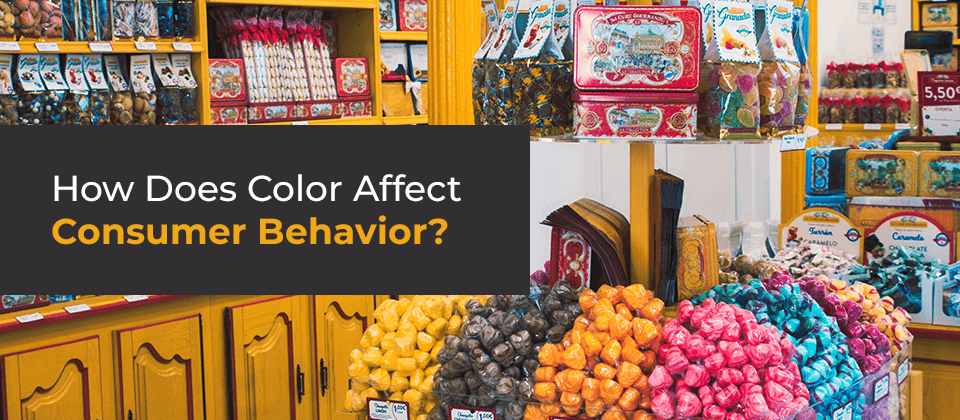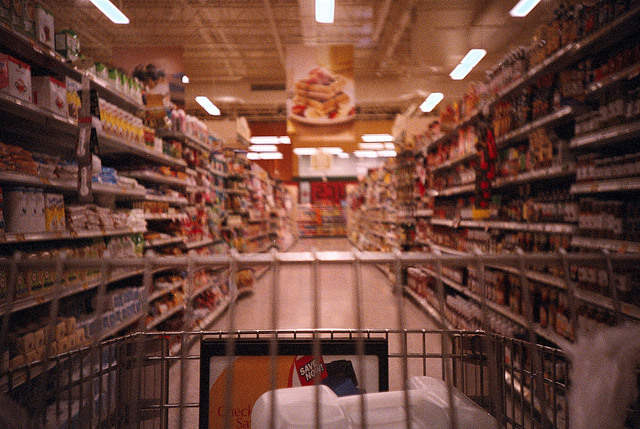Shelf height is crucial when setting up display fixtures in a retail establishment. Products' shelf position shapes the customer experience and can ensure successful merchandising. The wrong height can make the experience less shopper-friendly or too confining. Fixtures that are too high can be out of reach for some shoppers, causing them to choose alternative items. Retail display height also impacts product placement. As the saying goes, eye level is buy level. You want to put new or bestselling items in the most visible, convenient location for your customers.
Know Your Customer
The point of retail shelving is to present your goods in an attractive and eye-catching way. Customers plan only about one-third of the purchases they make. The rest are impulse buys, so shelves shelves should provide maximum product visibility and appeal. Here are some factors to consider when determining the appropriate retail shelf height from your customers’ perspective.- Store type: Think about where shoppers will expect to see your product. Larger or big-box establishments have higher ceilings and wider aisles, so their average retail shelf height will likely be higher.
- Accessibility: You should also consider your customers’ functional needs when selecting the best shelf height. For example, if you sell cosmetics, your shelving should be low enough to allow buyers to pick up and test the items. A taller, deeper display typically works best for larger, less hands-on products.
- Customer height: Most adults are between 63 and 69 inches tall, setting the average eye level at around five feet high. Consider your target audience's average height and age. Stocking products on shelves that meet shoppers' sightlines encourages interaction, which leads to purchasing.
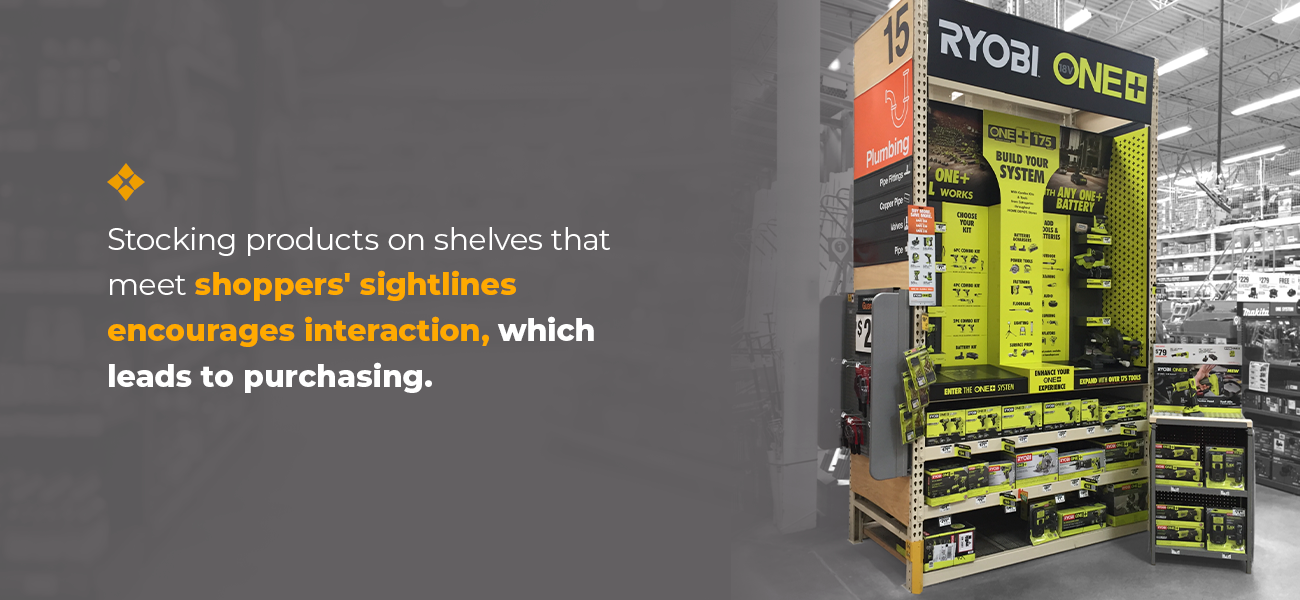
Know Your Products
Having an in-depth knowledge of your products also impacts the shelf height decision. Consider these variables.- Volume: Taller shelving projects volume. The more products you want to display, the higher the shelf height should be. Conversely, if you offer fewer items, lower shelving enables you to convey quality instead of quantity and a more intimate shopping experience.
- Size: Are you selling more oversized, heavier products? A lower shelf height may be necessary to ensure customers can remove the item without dropping or damaging it or injuring themselves. Smaller, lighter products can sit higher, making them more visible and easier to handle.
- Matching with display types: As you search for displays, you will find they are available in multiple heights. Great Northern Instore can simplify the selection process by offering various display products we can customize to your retail environment and unique height requirements.
Vertical vs. Horizontal Merchandising
Vertical and horizontal merchandising have distinct advantages and can work together to create more visually appealing, functional shelf-level retail displays.- Vertical: Arrange products by stacking them or placing them on shelves that extend upward. This strategy keeps a relatively small footprint while maximizing display space. It works well in stores with limited floor space, increasing exposure to different product options by encouraging customers to view your selection by looking up and down.
- Horizontal: This traditional display method emphasizes breadth over height. It simplifies browsing and is ideal for showcasing many complementary or similar products. Each item is visible and accessible without reaching up.
- Block: Block placement groups similar or complementary products together. Examples include school supplies or audio and video products.
- Market share: A bottom-line strategy where products that generate the most income get prime shelf placement, simplifying customer browsing.
- Commercial: Products with the highest brand awareness get prime, eye-level shelf real estate.
- Margin-level: Margin-level is another bottom-line strategy focusing on profits the products generate rather than the overall income they gain from a single sale.
Shelf Levels in Retail
On-shelf marketing depends on your brand's ability to keep items on shelves. Strategically organizing products across various shelf levels lets you optimize space, cater to diverse shoppers' needs or preferences and enhance product visibility. Retailers that carefully curate product placement at each level create displays that encourage browsing, boost productivity and drive sales. There are four primary shelf levels in retail.- Eye level: This prime placement is the most accessible height for customers, meeting them at chest or eye level. It is ideal for showcasing high-demand products, attracting the most attention and facilitating the most browsing.
- Stretch level: The topmost shelves sit above most customers' eye level, requiring them to reach upward or stand on tiptoe to access products. Products with less frequent purchases or high-margin items like seasonal items or oversized products usually take up this shelf placement.
- Touch level: The middle shelf is at touch level, just below the average adult's eye height. This placement showcases bestselling products by providing easy access and visibility. Staple goods and everyday essentials are often at touch level, making selection convenient for customers.
- Stoop level: The bottom shelf is well below the average eye level and requires customers to stoop down for product access. Typically, bulkier items or products with lower profit margins sit here.
Why Choose Great Northern Instore?
Great Northern Instore can help you achieve the best product placement with our high-quality retail displays and signage. When you partner with us, you get a turnkey solution you can install immediately on your sales floor. You will also get excellent service. We believe in building enduring relationships with our customers to ensure the best long-term results. Our goal is to help you win. For additional average retail shelf height tips or to learn more about our display products and services, call us at 855-693-6272 or contact us online today.